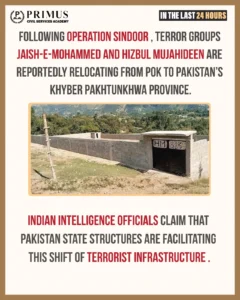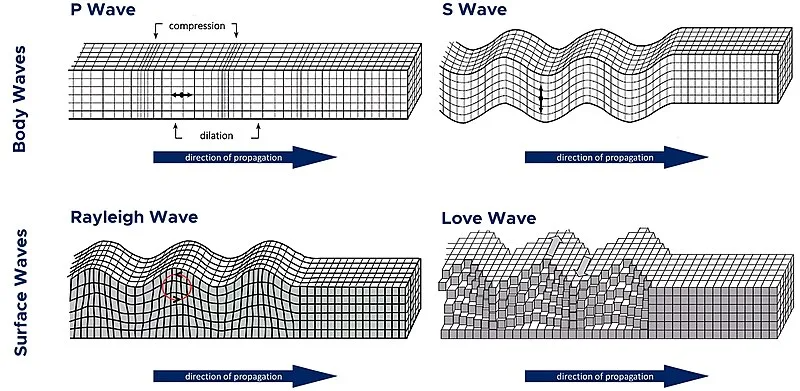September 20th Current Affairs
Table of Contents
Kannada Literature Optional Syllabus
Home / ಐಚ್ಚಿಕ ಕನ್ನಡ ಸಾಹಿತ್ಯದ ಪಠ್ಯಕ್ರಮ ಐಚ್ಚಿಕ ಕನ್ನಡ ಸಾಹಿತ್ಯ ಪತ್ರಿಕೆ – 1 ವಿಭಾಗ – ಎ ಅ) ಕನ್ನಡ ಭಾಷೆಯ ಚರಿತ್ರೆ ಭಾಷೆ
UPSC Current Affairs – October 6th
October 06th Current Affairs Home / Table of Contents 36-hour curfew imposed in parts of Odisha’s Cuttack over communal tensions
Religious Minorities in India and the Challenge of Communal Harmony: A Sociological Reflection on the Cuttack Violence
Home / Religious Minorities in India and the Challenge of Communal Harmony: A Sociological Reflection on the Cuttack Violence Sociology
UPSC Current Affairs – October 4th
October 04th Current Affairs Home / Table of Contents Isabgol Processors threaten to halt purchases from October 6th over GST
Sologamy and Contemporary Trends in Marriage: A Sociological Perspective
Home / Sologamy and Contemporary Trends in Marriage: A Sociological Perspective Sociology Paper 1: Systems of Kinship – Contemporary trends
UPSC Current Affairs – October 3rd
October 03rd Current Affairs Home / Table of Contents NASA IMAP to show how solar particles are energised and shield
Understanding Indian Festivals through Durkheim: Religion, Rituals, and Collective Conscience
Home / Understanding Indian Festivals through Durkheim: Religion, Rituals, and Collective Conscience Sociology Paper 1: Émile Durkheim – Religion and
UPSC Current Affairs – September 30th
September 30th Current Affairs Home / Table of Contents Ladakh groups reject talks with government, Ministry says open to dialogue
Caste Census in India: A Sociological Perspective
Home / Caste Census in India: A Sociological Perspective Sociology Paper 2: Caste System – Features of Caste system. The
Constitutional Morality: Upholding India’s Democratic Ethos
Home / Constitutional Morality: Upholding India’s Democratic Ethos Sociology Paper 2: Visions of Social Change in India – Constitution, law,
Trump Imposes $100,000 Fee On H-1B Visas: What It Means For Indians

Relevance to UPSC
GS Paper I: Society or Social Issues
- Social impact on Indian families abroad, diaspora communities, and the psychological/emotional aspect of immigration policy changes.
- The issue of skilled migration, its drivers and the social cost of losing human capital.
GS Paper II: International Relations / Foreign Policy
- Highlights changing dynamics of immigration policy in major powers (US) and how it affects foreign nationals, especially from India.
- Implications for India-US relations, particularly in tech, skill mobility, workforce movement, and diaspora matters.
- Raises issues about bilateral negotiations & agreements, visa reciprocity, and protection of Indian professional diaspora.
More About the News
- The US has imposed a $100,000 fee on new H-1B visa applications, aiming to limit visas to “very highly skilled” workers and to prevent replacement of American workers.
- India accounts for around 71% of beneficiaries of H-1B visas, so this change would hit a large number of Indian professionals.
- The US also announced a “Gold Card” visa program, with steep fees ($1 million for individuals, $2 million for businesses), aimed at attracting people who can create business or jobs in America.
H-1B Visa
The H-1B visa, a non-immigrant work visa of the United States, has become central to the global movement of skilled professionals, especially in technology and services. For India, this programme not only symbolizes opportunities for its workforce but also reflects the strategic depth of India-US relations in an interconnected world economy.
Background of H-1B Visa
- Established under the Immigration and Nationality Act of 1990.
- Designed to allow US employers to hire foreign workers in specialty occupations requiring theoretical or technical expertise.
- Commonly used by tech firms, consulting companies, universities, and research institutions.
Important Data Sets
- 65,000 visas issued annually under the regular cap.
- 20,000 additional visas for those with advanced degrees from US institutions (Master’s cap).
- Indians constitute around 70–75% of total H-1B recipients.
- Major beneficiaries: IT firms like TCS, Infosys, Wipro, HCL, Cognizant, and US-based tech giants employing Indian talent.
Features of H-1B Visa
- Employer-sponsored, tied to a specific job and employer.
- Initially granted for 3 years, extendable up to 6 years.
- Allows for dual intent (non-immigrant visa but can apply for permanent residency/Green Card).
- Covers specialty fields: IT, engineering, finance, mathematics, medicine, architecture, etc.
Uses of H-1B Visa
- Addresses skill shortages in the US labour market.
- Facilitates knowledge transfer between countries.
- Provides global exposure for Indian professionals.
- Enables US companies to remain competitive in high-tech industries.
Impact on India
Positive Impacts:
Remittances inflow and higher income levels for Indian diaspora
Example: Indians in the US remitted $125 billion in 2023 (World Bank), making India the world’s largest remittance recipient.Enhances India’s global reputation for skilled human capital
Example: The dominance of Indian-origin CEOs in US tech companies like Satya Nadella (Microsoft) and Sundar Pichai (Google) showcases India’s human capital strength.Boosts Indo-US strategic and people-to-people ties
Example: The large Indian diaspora (over 4.9 million in the US) plays a strong lobbying role in bilateral relations, including H-1B policy discussions.
Negative Impacts:
Risk of brain drain
Example: A significant portion of India’s top engineering graduates from IITs and NITs migrate to the US on H-1B, reducing talent availability in India.Dependence of Indian IT industry on US policy shifts
Example: Infosys and TCS face uncertainty when US administrations tighten visa norms (e.g., Trump-era restrictions on outsourcing contracts).Rising visa costs and restrictions affect Indian outsourcing companies’ profitability
Example: The recent $100,000 H-1B fee proposal (2025) would increase operational costs for Indian IT firms relying on on-site US projects.
Role of India–USA Ties
- H-1B has been a diplomatic lever in bilateral relations.
- US immigration reforms and restrictions often figure in India-US trade/strategic dialogues.
- Indian lobbying groups in the US actively defend H-1B interests.
- Deepening tech and digital cooperation (e.g., iCET initiative) reflects H-1B’s strategic role.
Way Forward
- India should diversify IT export destinations beyond the US.
- Promote domestic innovation ecosystems to retain talent.
- Strengthen bilateral negotiations for fair and predictable visa policies.
- Encourage Indian firms to invest in US markets to ease restrictions.
Types of American Visas
Visa Type | Purpose / Feature |
H-1B | For specialty occupations requiring high skills, employer-sponsored. |
H-2B | Temporary non-agricultural workers (hospitality, construction, etc.). |
H-2A | Temporary agricultural workers. |
L-1 | Intra-company transferees (executives, managers, specialized knowledge staff). |
O-1 | Individuals with extraordinary ability in sciences, arts, education, business, athletics. |
F-1 | Academic students in US universities/colleges. |
J-1 | Exchange visitors (scholars, interns, trainees). |
B-1/B-2 | Business visitors / Tourist visa. |
EB-5 | Immigrant investor visa for individuals investing in US businesses. |
Green Card | Permanent residency pathway (employment-based, family-based, lottery, etc.). |
The H-1B visa will continue to shape global labour mobility and India’s IT-driven diaspora linkages. However, geopolitical shifts and domestic pressures in the US may tighten opportunities. For India, building robust homegrown innovation hubs is essential to balance foreign dependence with domestic talent retention.
Prelims MCQ
Q. With reference to the H-1B visa programme, consider the following statements: 1. It is a permanent residency programme for high-skilled professionals. 2. It allows dual intent, i.e., the holder can apply for a Green Card while on H-1B. 3. India is the largest beneficiary of H-1B visas annually. Which of the statements given above is/are correct?
A. 1 only
B. 2 and 3 only
C. 2 only
D. 1, 2 and 3 only
Mains Question
Q. “The H-1B visa programme reflects both opportunity and vulnerability for India’s skilled workforce.” Discuss in light of India–US relations and the need for India to strengthen domestic innovation ecosystems.
After Operation Sindoor, terror groups Jaish-e-Mohammed and Hizbul Mujahideen shift base, say intelligence officials

Relevance to UPSC
GS Paper I: Geography, Social Issues
- Geographical factors:Terrain in Khyber Pakhtunkhwa (mountains, rugged border region with Afghanistan) offering natural advantages to displaced militant groups.
- Socio-political environment in Pakistan: Religious-political outfits being used; cross-section of religion, politics and militancy.
- Impact on populations in border regions: Displacement, cross-border militant violence, civilian security.
GS Paper III: Security, Defence, Internal Security
- Shows counterterrorism dynamics: How precision strikes affect militant infrastructure, and how geography (terrain, border regions) plays a key role in sheltering or locating militant bases.
- The role of intelligence, surveillance, logistics, and state capacity in tracking, preventing, or facilitating movement of terror groups.
- Implications for India’s internal security: Possibility of more infiltration across a wider region; challenge in securing border and border-adjacent states; risk of militant recruitment, radicalisation pipelines.
More About the News
- After Operation Sindoor, terror groups Jaish-e-Mohammed (JeM) and Hizbul Mujahideen (HM) are shifting their bases deeper into Khyber Pakhtunkhwa (KPK).
- The move is seen as a “tactical adaptation” since PoK is now more vulnerable to precision strikes; KPK offers more geographical depth, proximity to the Afghan frontier, established jihadi safe havens, and less immediate exposure.
- There’s evidence of state facilitation, local police protection for rallies, tacit support of political-religious outfits like Jamiat Ulema-e-Islam, recruitment drives in places such as Mansehra in KPK, etc.
Militancy in Jammu Kashmir
The militancy in Jammu & Kashmir (J&K) is one of the longest-running internal security challenges in India. Rooted in historical, political, religious, and cross-border dynamics, it has evolved from local insurgency to cross-border terrorism. The issue impacts national security, governance, and India’s relations with Pakistan and global powers.
Background
- Traces back to the partition of 1947 and Pakistan’s attempt to annex J&K through tribal raids.
- Discontent deepened after political instability in the 1980s (rigged 1987 state elections).
- Pakistan exploited local unrest, launching an armed proxy war in 1989.
Evolution
- 1980s–90s: Rise of indigenous militancy (JKLF) demanding independence.
- 1990s: Influx of Pakistan-backed groups like Lashkar-e-Taiba (LeT), Jaish-e-Mohammed (JeM).
- 2000s: Decline in local support, shift towards foreign terrorists.
- 2010s: Revival of local recruitment (Burhan Wani effect, 2016).
- Post-2019: Article 370 abrogation reduced overt militancy but infiltration attempts continue.
Important Data Sets
- Peak violence in 1990s: ~2,000+ terror incidents annually.
- Current trends (MHA data 2022): decline to ~125 terror incidents.
- Over 40,000 deaths since 1989 (civilians, militants, security personnel).
- Foreign terrorists comprise ~15–20% of militants, mostly infiltrated from Pakistan.
Causes of Militancy
Historical-Political Grievances: Perceived political marginalisation post-1987 elections.
Example: Rigging in the 1987 J&K Assembly elections pushed youth toward militancy.Cross-Border Support and Radicalisation: Pakistan’s ISI training camps and infiltration routes provide support to militants.
Example: Launch pads in PoK facilitate infiltration along the Line of Control (LoC).Religious Radicalisation: Spread of extremist ideologies through madrassas and online propaganda influences youth.
Example: Radicalisation of youth by groups like Hizbul Mujahideen.Unemployment and Lack of Economic Opportunities: Economic backwardness makes youth vulnerable to recruitment.
Example: Many young recruits come from South Kashmir districts with high unemployment.Human Rights Violations and Alienation: Excesses during counter-insurgency operations fuel resentment among locals.
Example: Public anger after civilian deaths in encounters, e.g., Shopian incidents.
Impacts of Militancy
Loss of Lives: Civilian, security personnel, and militant deaths.
Example: Pulwama terror attack (2019) killed 40 CRPF personnel.Economic Disruption: Tourism, horticulture, and trade sectors are severely affected.
Example: Frequent shutdowns and restrictions reduce tourist arrivals in Srinagar.Social and Psychological Impact: Trauma, migration, and a fractured society.
Example: Exodus of Kashmiri Pandits in the 1990s.Strain on Governance: Reduced local participation and weakened administrative functioning.
Example: Low voter turnout in many assembly constituencies.Impact on India–Pakistan Relations: Persistent friction and conflicts over J&K.
Example: Kargil War (1999) as a direct result of cross-border infiltration.
Challenges in Containing Militancy
Cross-Border Infiltration: Difficult terrain along the LoC facilitates infiltration.
Example: Regular infiltration attempts via Gurez and Poonch sectors.Local Recruitment Resurgence: Increasing radicalisation among youth.
Example: South Kashmir saw a surge in homegrown militants post-2016.Use of Technology: Terrorists exploit encrypted apps and drones for arms supply.
Example: Drone-based arms drops in Jammu region (2021).Civilian–Militant Nexus: Local support complicates counter-insurgency operations.
Example: Stone-pelting incidents during anti-militancy operations.Propaganda and Misinformation: Social media is used to radicalise youth.
Example: Online glorification of militants like Burhan Wani.
Role of Non-State Actors and Neighbouring Countries
- Pakistan’s ISI: Provides training, weapons, safe havens.
- LeT, JeM, Hizbul Mujahideen: Carry out attacks.
- Cross-border smuggling networks: Fund militancy via hawala, narcotics.
- Afghanistan spillover: Radical networks, arms movement after Taliban resurgence.
Government Measures Taken
- Military Operations: Operation Rakshak, All-Out, Sindoor (2025).
- Legal Frameworks: AFSPA, UAPA, PSA.
- Intelligence Strengthening: NIA, multi-agency coordination.
- Development Initiatives: PMDP, skill training, employment schemes.
- Political Steps: Abrogation of Article 370 (2019) to fully integrate J&K.
Way Forward
- Enhance border security with tech (drones, thermal imaging).
- Promote economic growth and employment in J&K.
- Strengthen de-radicalisation and education initiatives.
- Continue international diplomatic pressure on Pakistan.
- Rebuild trust through inclusive governance and dialogue.
Militancy in J&K is both an internal and external challenge for India. While strong security responses have weakened insurgency, the future lies in combining force with development, dialogue, and diplomacy. A sustainable solution requires both counter-terror resilience and winning the trust of local populations.
Prelims MCQ
Q. With reference to militancy in Jammu & Kashmir, consider the following statements: 1. Lashkar-e-Taiba originated as an indigenous Kashmiri separatist group. 2. The 1987 J&K Assembly elections are widely seen as a trigger for local militancy. 3. Infiltration across the Line of Control is the primary route for foreign militants. Which of the statements given above is/are correct?
A. 1 and 2 only
B. 1 and 3 only
C. 2 and 3 only
D. 1, 2 and 3
Mains Question
Q. “Militancy in Jammu & Kashmir is both a product of internal grievances and external interference.” Discuss with reference to its causes, impacts, and India’s strategy for a sustainable solution.
Manipur: Two Assam Rifles personnel killed, five injured as convoy ambushed on highway

Relevance to UPSC
GS Paper II: Polity, Governance, Centre-State Relations
- Illustrates challenges in maintaining law and order in conflict zones: The role of security forces and central response mechanisms in insurgency-affected states.
- Importance of intelligence, counter-terrorism strategy, preventive policing, and reactive operations by state and Union agencies.
- Governance issues: Ensuring civilian safety, maintaining public confidence, enforcing rule of law in volatile regions.
GS Paper III: Security, Internal Security
- Counter-insurgency operations, tactics, strategies for securing convoys, highways, protecting vulnerable points.
- Role of paramilitary forces like Assam Rifles in conflict zones; coordination among central and state security forces.
- Impact on infrastructure (highways), mobility, trade / local economy due to prolonged conflict.
More About the News
- Two Assam Rifles personnel were killed, and five injured, when their convoy was ambushed by “unidentified terrorists” in Bishnupur district, Manipur, on National Highway 2 near Nambol Sabal Leikai, about 8 km from Imphal airport.
- The killed were identified as Naib Subedar Shyam Gurung and Rifleman Ranjit Singh Kashyap; the injured have been evacuated to RIMS, Imphal, and are stable.
- No group has yet claimed responsibility; search operations are ongoing to locate the attackers. The attack comes amid continuing unrest between Meitei and Kuki-Zo communities in Manipur since 2023 and after a recent visit by the Prime Minister where peace was emphasised.
Assam Rifles
The Assam Rifles (AR) is India’s oldest paramilitary force, tasked with maintaining security in the Northeast. Operating along India’s porous borders and insurgency-affected areas, it plays a dual role of counter-insurgency and civil administration support. Its strategic presence is crucial for India’s internal security and regional stability.
Background
- Raised in 1835 as the Cachar Levy under British East India Company.
- Initially formed to protect tea plantations and maintain law and order in Northeast India.
- Post-independence, it became a paramilitary force under the Ministry of Home Affairs with dual reporting to the Indian Army and MHA.
Evolution
- 1835–1947: Early colonial policing and frontier security.
- 1947–1960s: Integration into independent India; managing insurgencies in Northeast.
- 1970s–1990s: Focus on counter-insurgency operations (Naga, Mizo, ULFA).
- 2000s–Present: Modernization with surveillance tech, cross-border monitoring, and civic action programs.
Important Data Sets
- Personnel strength: ~65,000 (approx.).
- Area of deployment: Arunachal Pradesh, Nagaland, Manipur, Mizoram, Assam, Meghalaya.
- Border coverage: ~1,643 km of India–Myanmar border.
- Number of battalions: 46 battalions.
Roles & Functions
- Counter-insurgency operations against militant groups.
- Border security along Indo-Myanmar border.
- Civic action programs: healthcare, education, disaster relief.
- Law and order support to state police.
- Intelligence gathering in insurgency-prone areas.
Important Operations Executed
- Operation Bajrang (1990): Counter-ULFA operations in Assam.
- Operation Rhino (1991): Large-scale counter-insurgency against ULFA.
- Operation Golden Bird (1995): Infiltration blocking and counter-insurgency along India-Myanmar border.
- Recent anti-militancy operations in Manipur and Nagaland (2020–2025).
Advantages of Having Assam Rifles
Effective Counter-Insurgency Force: Well-trained units to combat insurgency effectively.
Example: Operation Bajrang curbed ULFA activities in Assam.Border Security Specialist: Expertise in securing borders against infiltration.
Example: Secured the 1,643 km India–Myanmar border.Rapid Deployment Capability: Quick response to emerging threats and ambushes.
Example: Rapid deployment during the 2023 Manipur ambush to neutralize militants.Community Engagement & Civic Action: Building trust and winning hearts of local populations.
Example: Medical camps and schools set up in remote villages of Arunachal Pradesh.Integration with Army and State Forces: Coordinated operations for better efficiency.
Example: Joint operations with the Indian Army during counter-insurgency campaigns in Nagaland.
Impacts of Assam Rifles
Enhanced Internal Security: Strengthened security measures reduce insurgent activities.
Example: Significant reduction in cross-border insurgent activities in Nagaland.Improved Civil-Military Relations: Collaboration with civilians during crises builds trust.
Example: Disaster relief operations during floods in Assam and Manipur.Support to Economic Activity: Securing trade routes and infrastructure enables economic growth.
Example: Secured highways like NH 37 in Assam for safe trade.Political Stability in Northeast: Peace agreements with insurgent groups foster governance and stability.
Example: Peace in Mizoram after insurgent groups signed agreements.Intelligence Gathering for Policy Making: Actionable intelligence helps prevent attacks and plan operations.
Example: Arunachal Pradesh intelligence inputs prevented ULFA attacks in Assam tea gardens.
Challenges Faced
Difficult Terrain: Operations hampered by dense forests and hilly regions.
Example: Counter-insurgency operations in Nagaland and Manipur.Cross-Border Militancy: Infiltration from neighbouring countries complicates security efforts.
Example: Infiltration from Myanmar and China border areas.Limited Manpower vs Vast Area: Fewer forces spread across large, insurgency-prone regions.
Example: 46 battalions covering multiple northeastern states.Civilian-Militant Nexus: Militants exploit local support for logistics and shelter.
Example: Local assistance to militants in Assam and Manipur.Modern Warfare Technology Gaps: Insurgents use technology to evade detection and coordinate attacks.
Example: Use of drones and encrypted communication by insurgents.
Government Measures Taken
- Modernisation with advanced weapons and surveillance tech.
- Increasing budget allocation for infrastructure and welfare.
- Strengthening coordination with Indian Army, BSF, and state police.
- Implementing recruitment drives and training programs.
- Conducting civic and development programs to win hearts and minds.
Way Forward
- Expand training in modern counter-insurgency and cyber capabilities.
- Enhance cross-border intelligence sharing with friendly nations.
- Focus on local development initiatives to reduce recruitment into militancy.
- Strengthen inter-agency coordination in Northeast.
- Increase community engagement programs for long-term peace.
Assam Rifles is a critical pillar of India’s internal security and border management in the Northeast. Its dual role of combat and civic action strengthens regional stability. Looking ahead, modernization, better coordination, and community engagement will enhance its strategic effectiveness.
Prelims MCQ
Q.Consider the following statements about Assam Rifles:
1. It is the oldest paramilitary force in India.
2. It comes under the Ministry of Defence.
3.It is responsible for counter-insurgency and border management in Northeast India.
Which of the statements given above is/are correct?
A. 1 and 2 only
B. 1 and 3 only
C. 2 and 3 only
D. 1, 2, and 3
Statement 1 is correct (raised in 1835). Statement 2 is incorrect (AR is under Ministry of Home Affairs). Statement 3 is correct (dual role of counter-insurgency and border security).
Mains Question
Q. “Assam Rifles plays a crucial role in Northeast India’s security architecture.” Critically examine its roles, impacts, and the challenges it faces, suggesting reforms for the future.
Rare meteor breaks up over India, lights up skies in Delhi, Gurugram

Relevance to UPSC
GS Paper I: Geography
- Physical geography or astronomy component: Study of meteoroids, their trajectory, fragmentation, visibility, impact.
- Environmental impact and atmospheric dynamics: What happens when space fragments enter atmosphere (heat, friction, light, potential sound, etc.).
- Public perception of natural phenomena: Cultural / educational aspects of such sky events.
GS Paper III: Science & Technology, Disaster Management, Environment
- Helps understand atmospheric phenomena, space objects: meteors, bolides, how they behave upon entering Earth’s atmosphere.
- Disaster risk assessment: even though no damage in this case, meteor airbursts have caused damage in other parts of world (e.g. Chelyabinsk). Understanding such risks helps in preparedness.
- Role of scientific institutions (like ISRO, IMD, etc.) in observation, early warning / data collection of space events.
More about the News
- A bright meteor (likely a bolide) exploded over Delhi NCR (visible from Delhi, Noida, Gurugram, Ghaziabad, Aligarh), lighting up the sky, fragmenting in mid-air.
- The flash was short (a few seconds), but bright enough to outshine city lights, some people reportedly heard a faint rumble afterward.
- No damage is expected since most meteors disintegrate in the atmosphere before reaching the ground.
Space Rocks
Space rocks—meteoroids, asteroids, and comets—are fragments of matter orbiting the Sun or traversing the Solar System. While many are harmless, some pose existential threats to Earth. Understanding their characteristics, trajectories, and mitigation strategies is crucial for planetary defense and space science development.
Background
- Space rocks are small celestial bodies made of rock, metal, or ice.
- They range in size from dust particles to kilometers in diameter.
- Historically, impacts have shaped planetary surfaces, e.g., Chicxulub crater linked to dinosaur extinction (~65 million years ago).
Important Data Sets
- Near-Earth Objects (NEOs): ~30,000 identified by NASA.
- Asteroid belt: Between Mars and Jupiter; contains 1.9 million asteroids >1 km.
- Annual meteor fall on Earth: ~17,000 meteoroids enter atmosphere; most burn up as meteors.
- Largest known asteroid: Ceres (~940 km in diameter).
- Potentially Hazardous Asteroids (PHAs): >1 km in diameter, capable of global impact.
Various Stages Involved
- Formation Stage: Condensation in early Solar System (~4.6 billion years ago).
- Orbital Stage: Stable orbits in asteroid belts, Kuiper belt, or Oort cloud.
- Ejection Stage: Collisions or gravitational interactions propel objects toward Earth.
- Atmospheric Entry: Meteor stage; friction creates light/heat.
- Impact or Disintegration: Meteorite if survives; contributes to crater formation.
Sources and Position in Space
- Asteroid Belt: Between Mars and Jupiter.
- Kuiper Belt: Beyond Neptune; source of short-period comets.
- Oort Cloud: Distant spherical cloud; source of long-period comets.
- Moon & Mars: Secondary sources via ejecta from collisions.
Features
- Composed of rock, metal, ice, or mixtures.
- Sizes range from millimeters to several kilometers.
- Many follow elliptical orbits around the Sun.
- Reflectivity (albedo) varies depending on composition.
- May contain organic compounds, water ice, and minerals.
How They Are Formed
- Primordial remnants from the solar nebula.
- Collisional fragments from larger asteroids.
- Gravitational capture of comets and meteoroids into Solar System orbit.
Major Space Rocks Found or Detected
- Ceres (largest asteroid, dwarf planet).
- Bennu (target of OSIRIS-REx).
- Apophis (PHA, close Earth approach 2029).
- Halley’s Comet (periodic comet).
- Chelyabinsk Meteor (2013 atmospheric entry over Russia).
Impacts on Solar System
Crater Formation on Planets and Moons: Impact events create craters that shape planetary surfaces.
Example: Chicxulub crater on Earth (~65 Mya) linked to mass extinction of dinosaurs.Delivery of Water and Organics: Asteroids and comets can bring essential molecules to planets.
Example: Carbonaceous chondrites may have delivered water and organics to early Earth.Orbital Perturbations: Gravitational influence alters asteroid trajectories.
Example: Jupiter’s gravity significantly affects orbits in the asteroid belt.Atmospheric Phenomena: Meteor entries create shockwaves and sonic booms.
Example: Chelyabinsk meteor produced a sonic boom and widespread shockwave in 2013.Potential Global Catastrophes: Large impacts can cause massive destruction and climate effects.
Example: Tunguska event (1908) flattened over 2,000 km² of Siberian forest.
Challenges Faced
Detection and Tracking: Many small asteroids remain undetected until they enter Earth’s atmosphere.
Example: Small asteroids (<50 m) often discovered only at atmospheric entry.Impact Prediction: Requires precise tracking and long-term orbital calculations.
Example: Apophis’ potential impact risk remained uncertain until refined measurements in the 2020s.Mitigation Technology Gaps: Limited tested solutions for deflecting or destroying large potentially hazardous asteroids (PHAs).
Example: No proven deflection strategy for large objects.Funding and International Coordination: Planetary defense needs global cooperation but is underfunded.
Example: Limited budgets slow collaborative efforts between NASA, ESA, and other space agencies.Public Awareness and Preparedness: Lack of civil defense plans for asteroid airbursts or impacts.
Example: Few mechanisms in place to protect populations from events like Chelyabinsk or Tunguska.
Space Missions to Counter It
- NASA OSIRIS-REx: Sample return from asteroid Bennu.
- NASA DART mission: Kinetic impactor test to deflect asteroid Dimorphos.
- ESA Hera mission: Companion mission to study DART impact.
- NEO Surveillance missions: Space-based IR telescopes like NEOWISE.
International Regulations or Agreements
- Outer Space Treaty (1967): Use of outer space for peaceful purposes; prohibits harmful contamination.
- UN COPUOS Guidelines: Encourages transparency and sharing of NEO hazard data.
- Planetary Defense Coordination Office (NASA/UN collaboration): Sets international alert protocols.
Way Forward
- Invest in advanced telescopes and NEO tracking.
- Expand international cooperation for early warning systems.
- Develop asteroid deflection and mitigation technologies.
- Conduct simulated impact drills for civil preparedness.
- Encourage private sector participation in space hazard research.
Space rocks are a reminder of both the scientific opportunities and existential risks in our Solar System. While most are harmless, their potential to cause catastrophic events necessitates global vigilance. Future strategies must combine detection, mitigation, and international cooperation for planetary defense.
Term | Meaning | Features | Location in Space |
Asteroid | A small rocky body orbiting the Sun, mostly in the asteroid belt. | Size: meters to ~1000 km; irregular shape; composed of rock/metal; can be source of meteoroids. | Primarily in the asteroid belt between Mars and Jupiter; some near-Earth. |
Meteoroid | A small fragment of an asteroid or comet moving through space. | Size: mm to meters; irregular; high-speed; can become meteor upon entering atmosphere. | Space, usually orbiting Sun; can intersect Earth’s orbit. |
Meteor | The streak of light seen in the sky when a meteoroid enters Earth’s atmosphere. | Brief luminous trail; caused by atmospheric friction; usually burns up before reaching ground. | Earth’s atmosphere; visible during night or meteor showers. |
Meteorite | A meteoroid that survives passage through the atmosphere and lands on Earth. | Solid fragment; can be rock, metal, or stony-metal; studied for scientific insights. | On Earth’s surface after impact or landing. |
Prelims MCQ
Q. With reference to space rocks, which of the following statements is/are correct?
1. Near-Earth Objects (NEOs) include asteroids and comets whose orbits bring them close to Earth.
2. The Outer Space Treaty prohibits all scientific exploration of asteroids.
3. The Chelyabinsk meteor was a near-Earth object that caused atmospheric damage in 2013.
A. 1 and 2 only
B. 2 and 3 only
C. 1 and 3 only
D. 1, 2 and 3
Statement 1 is correct (NEOs include comets and asteroids approaching Earth). Statement 2 is incorrect (Outer Space Treaty allows peaceful exploration). Statement 3 is correct (Chelyabinsk meteor caused shockwave and damage in 2013).
Mains Question
Q. “Space rocks, though a source of scientific knowledge, pose an existential threat to Earth.” Examine the impacts, challenges, and global mitigation strategies for space rocks in the context of planetary defense.
‘Mirror life’: This synthetic form could end humanity, scientists warn

Relevance to UPSC
GS Paper III: Science & Technology, Biotechnology
- Emerging technologies / synthetic biology: Understanding of how advances in biology could lead to novel risks; need for foresight in R&D.
- Biosecurity: Potential new category of biological threat; implications for lab safety, regulation, dual-use research of concern.
- Risk assessment: What if new synthetic organisms escape containment,how to prepare or prevent such scenarios.
GS Paper IV: Ethics, Values, Moral Science
- Ethical issues around “Playing God”: Is it morally permissible to create synthetic life forms that could threaten existing life?
- Precautionary principle: Acting when risks are uncertain but potentially large, burden of proof lies in preventing harm.
- Responsibility of the scientific community: Accountability, transparency, governance in research that has global implications.
More about the News
- Scientists are warning about “mirror life”, which is a hypothetical synthetic organisms built from mirror-image biomolecules (i.e. DNA, proteins etc. with reversed chirality) which could pose “unprecedented risk” to life on Earth.
- The concern is that immune systems (in plants, animals, humans) might not recognize these organisms, making them potentially lethal. They could also evade natural predators, outcompete natural organisms, and become invasive.
- While such mirror life is still a long way off, technical challenges are significant, scientists are urging a moratorium or strict regulation before the technology becomes feasible, rather than afterwards.
Mirror Life
Mirror life refers to synthetic organisms or biomolecules with reversed chirality, i.e., left-handed (L-) molecules replaced with right-handed (D-) molecules. Though hypothetical, they pose both scientific opportunities and existential risks, raising ethical, regulatory, and biosecurity concerns globally.
Background
- The concept emerges from synthetic biology aiming to create life forms with mirrored molecular structures.
- Largely experimental; no fully functional mirror-life organism exists yet.
- Scientists warn that uncontained mirror life could evade natural immune systems and disrupt ecosystems.
Important Data Sets
- Mirror molecules have been synthesized in labs (e.g., mirror DNA, mirror proteins).
- Research mostly in Europe, US, and Japan with biohazard safety protocols.
- Publications warning risks: Nature Biotechnology (2025) and Science (2024).
- Funding and oversight: National Institutes of Health (US), EU Synthetic Biology programs.
- No global operational mirror-life organisms yet; considered high-risk research.
Evolution
- Early 2000s: Conceptual studies on mirror peptides.
- 2010s: Successful synthesis of mirror RNA and proteins in vitro.
- 2020s: Recognition of biosecurity threats; calls for moratoriums and global oversight.
Features
- Chirality is opposite to natural biomolecules (D-amino acids instead of L).
- Resistant to natural enzymes and immune responses.
- It can potentially catalyze novel chemical reactions.
- It cannot be digested or broken down by existing life forms.
- Highly stable under extreme conditions compared to natural biomolecules.
Regulatory Bodies / Ministry
- National (India): Department of Biotechnology (DBT), Ministry of Science & Technology.
- International: WHO, OECD Guidelines on Synthetic Biology, UN Office for Outer Space Affairs for biohazard oversight.
- Biosecurity advisory boards in US, EU (NIH, EMBL).
Advantages
Novel Biocatalysis: Mirror enzymes could enable new industrial chemical reactions that resist natural degradation.
Example: Use in manufacturing of chemicals or pharmaceuticals where conventional enzymes fail.Medical Research: Mirror DNA and RNA could lead to drugs resistant to breakdown by natural enzymes.
Example: Development of more stable therapeutics for longer-lasting effects in the body.Extreme Condition Stability: Mirror proteins may survive extreme heat, acidity, or chemical exposure.
Example: Ideal for industrial biotechnology processes operating under harsh conditions.Synthetic Life Studies: Helps explore alternative forms of life and deepen understanding of origins of life.
Example: Model systems to study how life might arise in different planetary environments.Potential for Biotechnological Innovation: Opens up possibilities for novel synthetic tools.
Example: Creation of biosensors or molecular systems impervious to natural pathogens.
Disadvantages
Biosecurity Threat: Risk of mirror-life forms bypassing immune systems or natural predators if released accidentally.
Example: Could create hard-to-control outbreaks.Environmental Risks: Potential for mirror microbes to disrupt ecosystems.
Example: Uncontrolled release might allow them to outcompete natural species in soil or water.Ethical Concerns: Raises philosophical and moral debates about creating synthetic life.
Example: Concerns about playing with “non-natural chemistry” and its consequences.Unpredictable Interactions: Unknown reactions between mirror biomolecules and natural organisms.
Example: Could trigger novel biochemical pathways or toxicity.Research Cost and Complexity: High cost and technical difficulty of safe research and containment.
Example: Requires advanced synthesis and BSL-4 level containment labs.
Impacts
Scientific Advancement: Provides an alternative model for studying protein folding, genetics, and origin-of-life hypotheses.
Example: Helps researchers explore non-natural biochemistry.Industrial Applications: Offers robust and stable biocatalysts for industry.
Example: Mirror enzymes for detergents, pharmaceuticals, and biofuel production.Healthcare Innovations: Can lead to more effective and longer-lasting drugs.
Example: Mirror drugs resistant to digestive enzymes, improving oral therapies.Environmental Implications: Accidental release could disrupt natural microbial ecosystems.
Example: Mirror microbes potentially altering soil or water microbiology.Global Biosecurity Concerns: Risk of misuse or uncontrolled spread.
Example: International moratorium proposals to prevent dangerous applications.
Challenges Faced
Containment and Safety: Research leaks could have unpredictable consequences.
Example: Strict biosafety levels required to avoid accidental escape.Regulatory Gaps: Lack of clear legal and ethical frameworks.
Example: Existing bioethics guidelines don’t fully regulate mirror-life research.Scientific Complexity: Technical barriers in creating long mirror-DNA/RNA sequences.
Example: High cost and limited expertise slow progress.Global Coordination: Need for international collaboration and governance.
Example: No binding treaty exists — only voluntary guidelines.Public Awareness and Ethics: Ethical debate and public understanding lag behind technological innovation.
Example: Raises questions about “creating new life forms” and their societal impact.
International/National Regulations
- UNESCO, WHO, OECD: Guidelines for synthetic biology research.
- India: DBT Guidelines for handling GMOs; potential inclusion of mirror life.
- Call for moratoriums on mirror life experimentation until risks are assessed.
Way Forward
- Establish strict lab safety and containment protocols.
- Develop national and international regulatory frameworks specific to mirror life.
- Promote ethical review boards for all synthetic biology experiments.
- Encourage research transparency and international cooperation.
- Monitor and assess potential environmental and health risks continuously.
Mirror life represents the frontier of synthetic biology with enormous potential for science and industry. However, its existential and ecological risks demand stringent regulation and ethical oversight. Future strategies must balance innovation with global biosecurity and responsible governance.
Prelims MCQ
Q. With reference to Mirror Life in synthetic biology, which of the following statements is/are correct?
1. Mirror life organisms have reversed chirality compared to natural life forms.
2. They have been fully synthesized and deployed in industrial production.
3. Biosecurity and containment are primary concerns associated with mirror life.
A. 1 and 2 only
B. 2 and 3 only
C. 1 and 3 only
D. 1, 2 and 3
Statement 1 is correct (mirror DNA/proteins have reversed chirality). Statement 2 is incorrect (fully functional mirror life is not yet deployed). Statement 3 is correct (containment and biosecurity are major concerns).
Mains Question
Q. Mirror life poses both unprecedented scientific opportunities and existential risks. Examine the advantages, disadvantages, and regulatory challenges associated with mirror life, suggesting a balanced policy approach for India.




